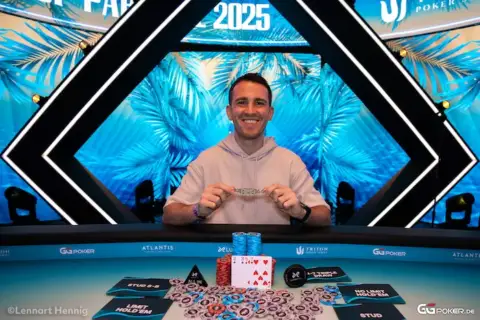When it comes to planning your poker schedule for the year, it’s critical to consider not just the events you want to play, but also the must-plays, balancing your bankroll considerations along with likely travel expenses and other factors. Must-plays are poker tournaments that the poker community hivemind considers absolutely mandatory. These are tournaments like the WSOP Main Event, the $1,500 Millionaire Maker, GGPoker’s daily $54 200K guaranteed PKO, one of the many mystery bounty events guaranteeing a 200K+ top bounty pull, or the late 2024 $5,000,000 ClubWPT Gold Invitational Freeroll – provided you luckboxed an entry. The key to making an event a must-play is how much can be won relative to the entry fee paid; i.e., value.
A poker pro with a poker pro’s bankroll can do their due diligence to be in attendance of most of these “must-plays”. However with an ongoing global poker boom, we now have a situation where there are always several major value options. A person can only be in one place at a time and thus, decisions have to be made. Unlike poker pros, the average poker enthusiast has the challenge of limited resources; getting time off from work, having the buy-ins, etc. There might be infinite poker action available but a very finite amount of time and money. If we want to distribute these limited poker resources optimally, we should first check the calendar.

The Poker Calendar
Somehow, whether by serendipity or a conspiracy by poker operator elites, the majority of big poker action and prestige is concentrated by the changing seasons. Early May brings in the spring online championships across most online poker sites. With the summer weather that follows, poker players across the globe convene in Las Vegas for the WSOP. September brings the most prestigious of online championships and winter brings a poker Christmas with three major live stops and a plethora of winter/New Year themed online series. For quick reference:
May – Online
June-July – Live
September – Online
December – Live and Online
It’s these months where professionals tend to be packing in their volume. Recreational players trying to get the most out of their time off for poker and their bankrolls should also consider optimal ways to plan the poker trips themselves.
Poker’s Off-Season
Like sports, poker has an off-season. January-April, July-August, and October-November tend to be the cooler periods on the annual poker calendar but are by no means short of action. WPT, EPT, WSOP Circuits run year round. Online poker sites offer shorter run series as well. And, of course, every Sunday offers a plethora of great online poker. Live MTT pros tend to be at it the whole year, the same way online pros will also play everything on the schedule and “never miss a Sunday”. However, many pros and serious recreational poker players use off-season as a time to study and attend to the mythical “other” things in life (Is this a real thing?).
- Study Time: There are different ways to schedule poker study time. Online players tend to batch review into daily or weekly sessions. This allows them to stay up-to-date while they continue pumping out volume. However, off-season provides an opportunity to make strides in your poker game and take full advantage of your poker training site memberships. It’s during this time where you can pass on some of the smaller guarantees and lower upside to get in the lab in preparation for show-time.
- Non-Poker: It’s easy to forget that we play poker not only as an end in itself but also as a means to an end. The dream is to win life-changing money and live on your own terms. We want to put ourselves in a position to do the other things we love, spend time with the people we care about, and contribute in some meaningful way. Fortunately, we don’t need to win big to do these things. In the poker calendar, off-season provides ample opportunity to live your life. It’s just a game, people.
My Poker Plan and Yours for the New Poker Year
I have outlined for you what is basically my year-after-year poker schedule:
- January – Finishing online winter/New Year series.
- February-April – Poker study, family and friends, other projects, the odd small live series, maybe some live cash games. Off-season stuff.
- May – Online MTTs.
- June-July – As much time at the WSOP as I can handle (six weeks is a long time to be in fabulous Las Vegas, Nevada!)
- July-August – Off-season stuff.
- September – Online MTTs.
- October-November – Off-season life.
- December – Try and close out the year strong.
I’m a full-timer but for most readers, doing it like this is just not in the cards. Even so, understanding what the community’s poker calendar looks like can help with making decisions for your year. It’s very easy to FOMO play because that’s what we do: we play. But stepping back, looking at the whole, can really help with knowing where to put your time and money. And, clarify what a must-play is for you.











